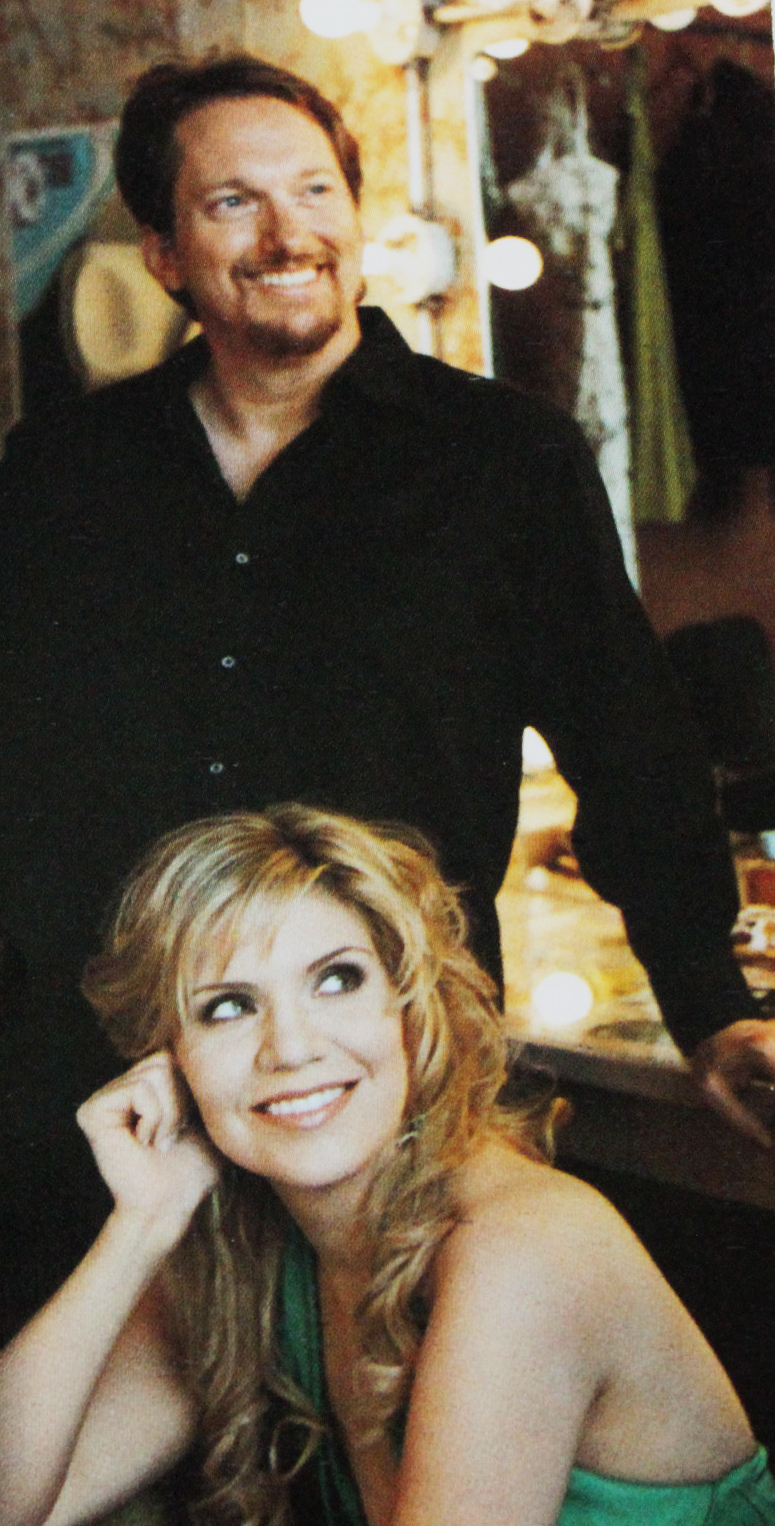Alison Krauss + Union Station’s Live came out in 2002, and I was fortunate to have been able to work on the vinyl, CD and DVD releases as one of my first projects as Creative Director for Rounder Records. Many people will tell you that live albums are often a placeholder in an artist’s catalogue, whether they be great, awful or somewhere in between. From an art director’s standpoint, that’s certainly true, as the visuals often focus on the “concert experience” and mostly rely on live photography. The goal is often to create an authentic and permanent souvenir for the fan base.
Studio albums, however, are a whole ‘nother animal, where concept is often king. For the follow-up to the live release, Alison and her camp came back to us with the idea of doing a photo shoot of the band in one of the old dressing rooms of Nashville’s famed Grand Ole Opry. On paper, it was a brilliant idea that would delight her fans and catch the country music world’s attention. In reality, it was unworkable.
A typical dressing room at the Grand Ole Opry.
Rounder had many contacts in Nashville — in fact, it was where Alison was living at the time — and we soon learned that the very charm of these old theaters were precisely the problem with our intended shoot: the theatres may be “intimate” for concerts, but the dressing rooms are simply small and cramped. There was no way to get a five person band, a photographer and assistant, a makeup and wardrobe person and light rigs into these incredibly cool, but incredibly small spaces. What now?
"Our" dressing room on the LP/CD back cover.
The decision was made to rent a warehouse space and build a set to match the look and vibe of the dressing rooms of Nashville’s grand ol’ dame. I assumed a general contractor skill set, working with carpenter unions, insurance binders and set decorators, and laying out milestones in advance of the shoot. I was ecstatic when I received rough pictures of what it looked like — everyone involved did an amazing job. Take a look at the detail on the walls of “the dressing room” on the final cover.
World-renowned photographer Norman Jean Roy shot the cover and all of the incidental photography for Lonely Runs Both Ways. In group photos, it’s often difficult to get a shot where everyone looks good. Not everyone was happy with their shot, so there had to be some minor retouching; one band member’s head was replaced with a head from a different shot and a pair of eyeballs on another member was also swapped out. With the majority of the musicians happy, this was the simplest, easiest and best route to go and it looks seamless. Norman Jean Roy’s photography throughout the booklet brilliantly extends the illusion of a band hanging out before or after a show.
Not so fast, however. A busy cover presents a potential issue: where to put the artist/band name and title of the recording, and have it be legible. In this case, it would definitely have to go on the lower third, lest it run across a band member’s head. Type location can be a major issue to some within the industry, as it can be obscured in retail store “bins” if not on the top of the cover. Sometimes, however, the name simply can't be at the top and that was the case here. Ultimately, I believe its location perfectly complements the overall composition and the cover stands on its own, with a life long after its “store life.”
I thoroughly enjoyed working with Alison. She was never less than lovely and complimentary and one of my favorite memories is seeing her sing the national anthem at Fenway Park. In overalls. Pure Alison. The cover of Lonely Runs Both Ways, in my opinion, stands as a visual reminder to the fact that Alison Krauss + Union Station were always a band — a great band, in fact,— and not merely a singer with backing musicians.




